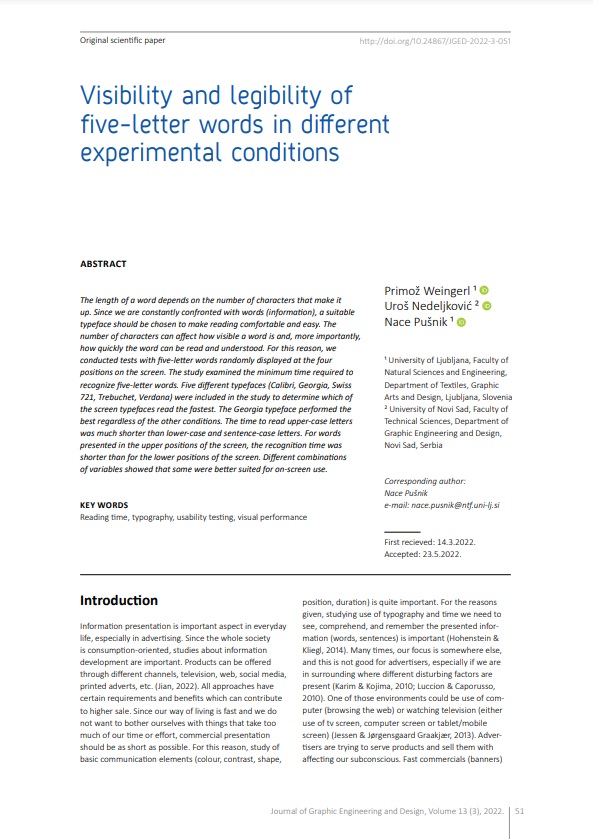Visibility and legibility of five-letter words in different experimental conditions

Published 2022-09-01
abstract views: 337 // Full text article (PDF): 232
Keywords
- Reading time,
- typography,
- usability testing,
- visual performance
How to Cite
Copyright (c) 2022 © 2022 Authors. Published by the University of Novi Sad, Faculty of Technical Sciences, Department of Graphic Engineering and Design. This article is an open access article distributed under the terms and conditions of the Creative Commons Attribution license 3.0 Serbia.

This work is licensed under a Creative Commons Attribution 3.0 Unported License.
Abstract
The length of a word depends on the number of characters that make it up. Since we are constantly confronted with words (information), a suitable typeface should be chosen to make reading comfortable and easy. The number of characters can affect how visible a word is and, more importantly, how quickly the word can be read and understood. For this reason, we conducted tests with five-letter words randomly displayed at the four positions on the screen. The study examined the minimum time required to recognize five-letter words. Five different typefaces (Calibri, Georgia, Swiss 721, Trebuchet, Verdana) were included in the study to determine which of the screen typefaces read the fastest. The Georgia typeface performed the best regardless of the other conditions. The time to read upper-case letters was much shorter than lower-case and sentence-case letters. For words presented in the upper positions of the screen, the recognition time was shorter than for the lower positions of the screen. Different combinations of variables showed that some were better suited for on-screen use.
Article history: Received (March 14, 2021); Revised (May 17, 2022); Accepted (May 23, 2022); Published online (September 1, 2022)

